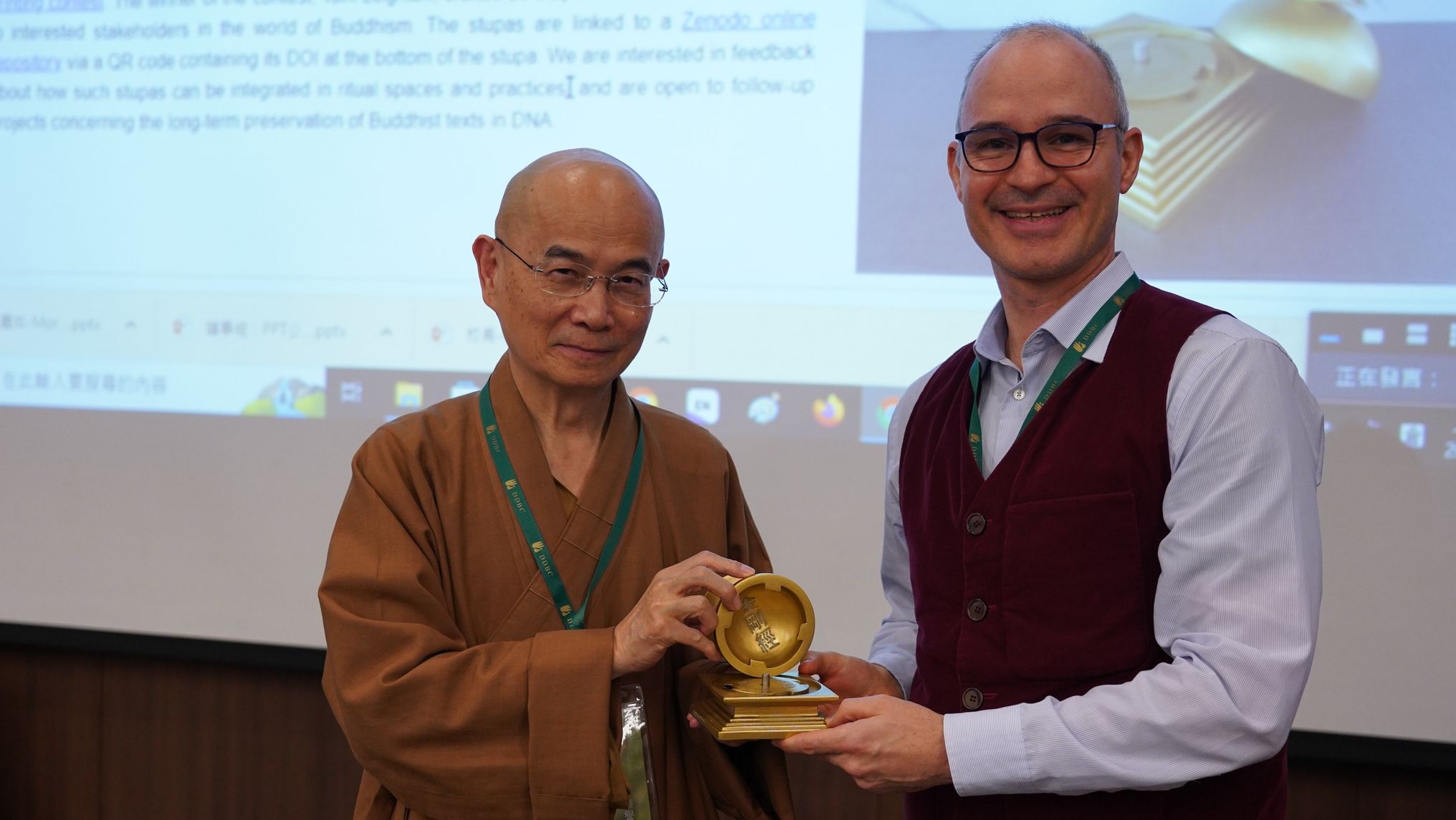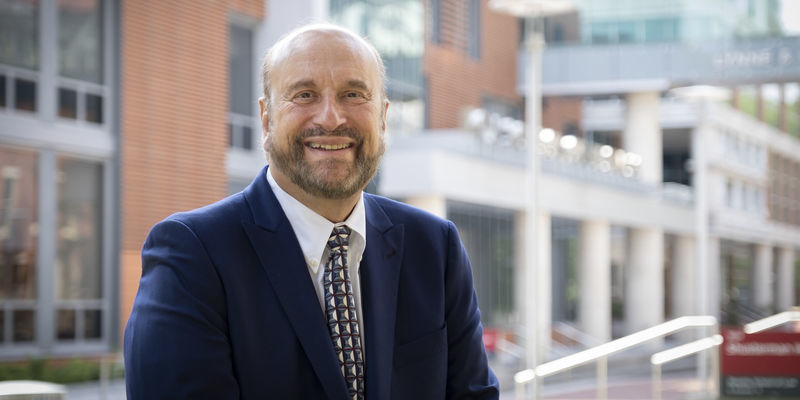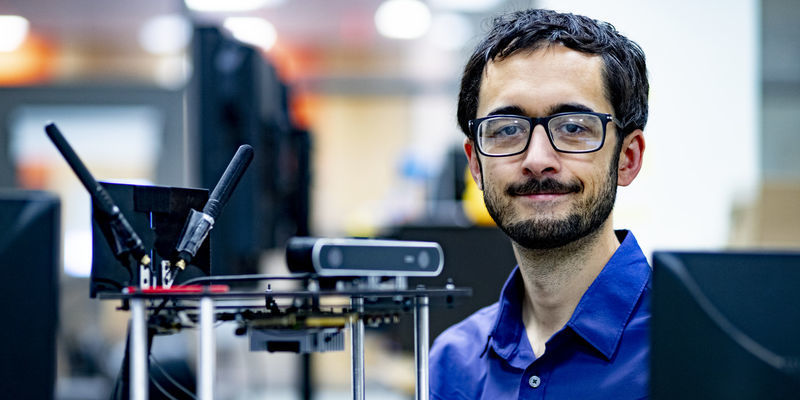Temple professor stores religious text in DNA in interdisciplinary approach
Marcus Bingenheimer, associate professor of religion, helped lead a DNA storage project of an ancient Buddhist text. This research combines multiple fields of study.

Associate Professor of Religion Marcus Bingenheimer, a Buddhist studies scholar, has been exploring a new way to preserve ancient writings: DNA.
Through Temple’s Presidential Humanities and Arts grant, Bingenheimer, along with a cross-disciplinary team of researchers from digital humanities, religious studies, computer science, art and design, and the life sciences, have encoded and synthesized the Diamond Sutra, a fundamental Buddhist text, in DNA capsules. The first dated printed book is a copy of the Diamond Sutra. The team that worked closely with Bingenheimer includes Associate Professor of Biology Rob Kulathinal, Matt Shoemaker from Temple’s Loretta C. Duckworth Scholars Studio, and Associate Professor of Computer Science Justin Brody from Franklin and Marshall College.
The DNA capsules that have encoded and synthesized the Diamond Sutra are being stored in 3D-printed miniature stupas, dome-shaped structures housing Buddhist relics. It is the first dedicated Buddhist text encoded in DNA.
“DNA is how all life on earth stores information,” said Bingenheimer. “This project introduces and explores the potential of DNA as a medium for digital data storage. Temple can play a role in that.”
Bingenheimer explained that our current digital storage infrastructure is fragile because it’s based on electricity and constantly being copied and recopied into new storage mediums, housed in huge storage centers. DNA, on the other hand, can encode huge amounts of data in a small volume, making it easier to transport. It also requires less energy to maintain storage and if kept in dark and dry spaces can last for hundreds, even thousands, of years.
“Printing was an important step because it allowed the creation and dissemination of identical copies of a text in a great number, which changed our society,” explained Bingenheimer. “Digitization was the next big step when text got converted into digital binary information in computers, and suddenly there’s a whole digital library. We as a culture continue to experiment with different carriers of information. I’m interested in how cultural information about Buddhism has been stored and encoded in various mediums over the centuries.”
Bingenheimer will distribute the 3D-printed stupas containing the DNA capsules to various stakeholders, including Temple Libraries, the Library of Dharma Drum Institute of Liberal Arts in Taiwan, Seeland Monastery in Taiwan and other institutions. The 20 stupas were designed by Tom Leighton, who won the miniature stupa 3D-printing contest that the Scholars Studio organized as part of the interdisciplinary project. A QR code with a digital object identifier (DOI) at the bottom of the stupas links to a Zenodo online repository that includes decoding instructions and other information.
Despite drawbacks to DNA as a storage medium, such as the time and expense of DNA synthesis, it’s gaining momentum thanks to its long-term stability, especially for carrying cultural heritage information, and industries are working to standardize it. Bingenheimer lauds Temple for helping progress this technology.
“Not all higher education institutions would fund such an experimental, explorative project,” he said. “In the future, we hope to have classes and facilities allowing us to engage further with DNA storage.”

